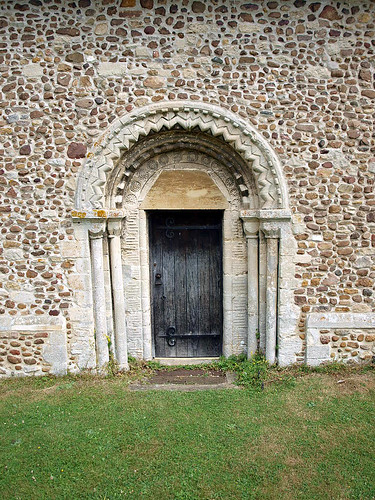ST MICHAEL. By Arthur Blomfield, 1873. Neo-Norman, of nave and chancel with W bellcote. But the masonry is mostly original Norman work, and there are a Norman S window and a Norman S doorway, evidently late. Two orders of shafts, single- and double-scallop capitals, undecorated tympanum but a band of rosettes round it, zigzag arch, the zigzag also placed at r. angles to the wall. The chancel arch is Norman too, but here the capitals have volutes and also - foreshadowing waterleaf - inturned volutes. In one abacus a little decoration. Single-step arches. - Outside the S wall lies a large Sarsen stone.
TOSELAND. Its greatness is almost forgotten, but it has the remains of a moated camp near a Roman road, and the churchyard has a Moot Stone where the Toseland Hundred met. Today there is a Tudor hall and a thatched barn, and the chief possession of the village is its legacy from the Normans - a noble doorway for the church, with an arch enriched with circles, beads, and zigzags. The south wall of the nave is nearly as they left it, and the chancel arch is theirs, one of its capitals with their scroll ornament. The church has a 17th century oak table with legs like barley sugar sticks, and an Elizabethan chalice.

No comments:
Post a Comment